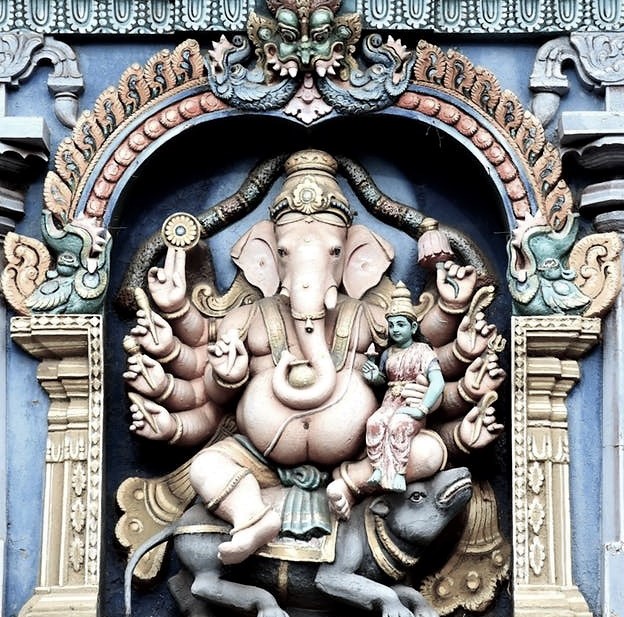- Special FeaturesFoundation Year1000 - 2000 years oldSthala TreeTheerthamRathamArchitectureDravidian architectureOther Speciality(Divya Desam)
- Sthala Puran
The temple in its current form is believed to have been built during the Medieval Cholas, with later expansion from Pandyas, Hoysala Empire and Vijayanagara Empire. The temple has fifty inscriptions from Kulothunga Chola I (1070–1120), Vikrama Chola (1118–1135), Rajaraja Chola III (1216–1256), Jatavarman Sundara Pandyan (1251–1268), Vikrama Pandya, Vira Pandya III, Vijayanagar king Achyuta Deva Raya (1529–1542 CE) and Koperunjinga.
The temple finds mention in Brahmanda Purana, Naradiya Purana and Skanda Purana. According to the accounts, a group of sages wanted to have a sacred view of Vishnu and went all the way to Thiruparkadal, the Ocean of Milk. They could not view Vishnu there and went all the way to Vaikunta, the heavenly abode of Vishnu. The guardians there stated that they could meet Vishnu only in a place close to the seashore north of Kumbakonam, south of Tirupathi and west of Kanchipuram. When the sages reached there, they found sage Markandeya and his daughter Bhudevi were doing penance. They could view Mahavishnu in resplendent form with his weapons Sudarshana (wheel), Panchajanya (conch) and Kaumodaki gracing his arms.
As per another legend, Vishnu handed the job of obtaining the pure water of lake Vraja Theertha located in the nether world to Garuda, the eagle vahana. Garuda reached the nether world and secretively obtained the water from the lake, without the knowledge of the sage, who established the lake. The sage came to know about it and cursed the water to turn impure. Garuda then pleaded with the sage indicating the orders of Vishnu. The elongated transaction delayed the proceedings and Vishnu turned to his other prime devotee Adhisesha the serpent who constructed a well by whipping the earth with his tail. The water from this well is used daily for the preparation of the temple prasad. The legend says, adding salt, pepper and jaggery to this well cures the devotee of any ailments and is religiously followed by people with skin ailments. Garuda was highly aggrieved and felt for his guilt. Vishnu appeased him saying that he would establish a river, which is believed to be the Kedilam river. A ceremonial bath is celebrated annually to commemorate the event.
History:
The Epigraphical Department has found more than 50 inscriptions in the temple belonging to the Medieval Chola period. The inscriptions indicate grants to the temple from Kulothunga Chola I (1070–1120), Vikrama Chola (1118–1135), Rajaraja Chola III (1216–1256), Jatavarman Sundara Pandyan (1251–1268), Vikrama Pandya, Vira Pandya III, Vijayanagar king Achyuta Deva Raya (1529–1542 CE) and Koperunjinga. The Chola country was under siege during the rule of Rajaraja Chola III and he was imprisoned by Koperunjinga, a Pallava scion. Vira Narasimha II (1220-1234) came to the rescue of the Chola and ultimately killed the Ceylon king Parakramabahu. A temple tower was erected during the reign of Koperunjinga, while the procedures of worship were accorded similar to other temples during the reign of Maravarman Sundara Pandyan. The descendants of Ramanuja were given special provisions for worship during the period of Vijayanara Empire. In modern times, the temple is maintained and administered by the Hindu Religious and Endowment Board of the Government of Tamil Nadu.
- Architecture
The temple is located on the foothills of Outshadagiri, a small hill, which houses the temple of Hayagriva. The river Kedilam, located on the other side of the temple flows from south to north and is locally called Uttaravahini. The temple built in Dravidian Architecture, is the only Vishnu temple built on the banks of the river, while there are a few prominent Shiva temples. A granite wall surrounds the temple, enclosing all its shrines and bodies of water. The temples faces east, but the rajagopuram, the temple's gateway tower, is located on the western entrance and has five tiers and raises to a height of 60 ft (18 m). The image of the presiding deity, Devanathaswamy, is housed in the central shrine. The sanctum also houses the image the consort, Senkamalavalli Thayar (also called Hemabhujavalli, Vaikunta Nayagi and Amruthavarshini) in sitting posture. The festival images of Vishnu, called by different names like Moovaraghia oruvan, Achuta, Dvistantha, Devanatha, Vibhuthanatha and Dasyatha, is housed in the sanctum. The temple houses the images of other deities like Pallikonda Perumal, Andal, AdiKesava Perumal, Azhwars, Hanumar and Garuda. There is a separate shrine housing Rama, though the presiding deity is Devanathaswamy, the temple is known for Hayagriva, the horse faced avatar of Vishnu. The images of Garuda and Hanuman are depicted in unique postures of Anajalihasta, which is different compared to all other temples. The temple is the only historical temple in South India to have a shrine of Hayagriva.
- Alankar of Deity
- Prayers and BenefitsSpecial Vratas and PrayersOfferings to DeityStotras and Mantras
- FestivalsTwelve-day BrahmotsavamCelebrated during the Tamil month of Chittirai (April - May)Masi Mahotsavam is another ten-day festivalTamil month of Masi (February - March)Krishna JanmashtamiKarthigaiTamil New YearMargazhi ten-day festivalSankaranthiPanguni UthiramRohini Utsavam
- Sodasha Upcharas
- Prasadhas
- Social ActivitiesAnnadhanMarriageEar BoringHead ShaveDanaasEducation FacilitiesSocial DrivesOther Activities
- Arjita Seva
- Tags

